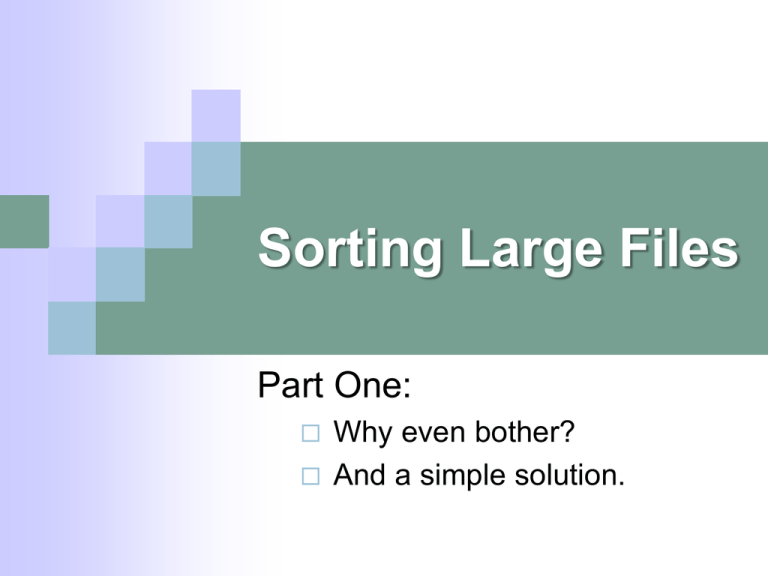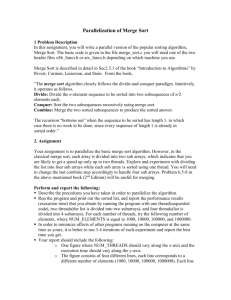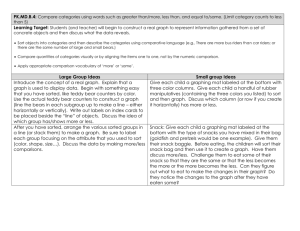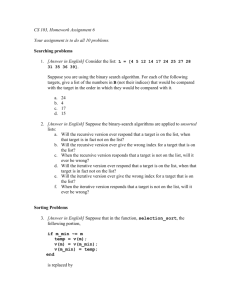Sorting Large Files
advertisement

Sorting Large Files Part One: Why even bother? And a simple solution. Starter Questions Why sort a large data file? speed of searching Why not sort a large data file? difficult to add and delete data Searching Unsorted Files Algorithm - Sequential Search start at top of the file and inspect each record until found Efficiency best case: worst case: average case: 1 N N/2 average search for 1,000,000 records is 500,000 compares Big O N Searching Sorted Files Example 1: Sequential Search Example 2: Binary Search Basic Algorithm look at middle record if (target < current record) look at front half else look at end half Big O = log2(N) average search for 1,000,000 records is 20 compares Editing Unsorted Files How do you add data? append new data to end of file How do you delete data? mark over records with Xs and 0s periodically clean the file Editing Sorted Files To Delete Records, we cannot put Xs over the key field of records Maintain 3 sorted Files working data data to delete data to add To Update --> Merge the three all at once Example Update of Sorted File Working Data: aardvark bat cat dog giraffe hippopotamus Data to Delete: cat Data to Add: elephant ferret New Working Data: aardvark bat dog elephant ferret giraffe hippopotamus Question Why we would ever need to sort a file? Wouldn't we build it sorted to begin with and just keep it sorted? sort a big block of new data e.g., list of transactions from today sort a huge file by a different key File Sorting Algorithms Internal Sorts when the whole file will fit in main memory algorithm: 1. read the unsorted file into memory 2. sort all at once 3. write to new file File Sorting Algorithms External Sorts when the file is too big to fit in memory over simplified algorithm: while not eof read a big block of the data into memory sort that portion write into a temp file merge all those temp files 2-Way Merge Sort Create 2 sorted files Read 1st half of file W sort it, then write to Read 2nd half of W into sort it, then write to into memory file X memory file Y Merge the 2 files Read record x from X Read record y from Y While both X and Y contain records if x < y write x to Z read x from X else write y to Z read y from Y If X is empty write remainder of Y to Z else write remainder of X to Z Next Time Good internal sorts Merging a small amount of unsorted new data into a Big Sorted File N-Way Merge Sort











